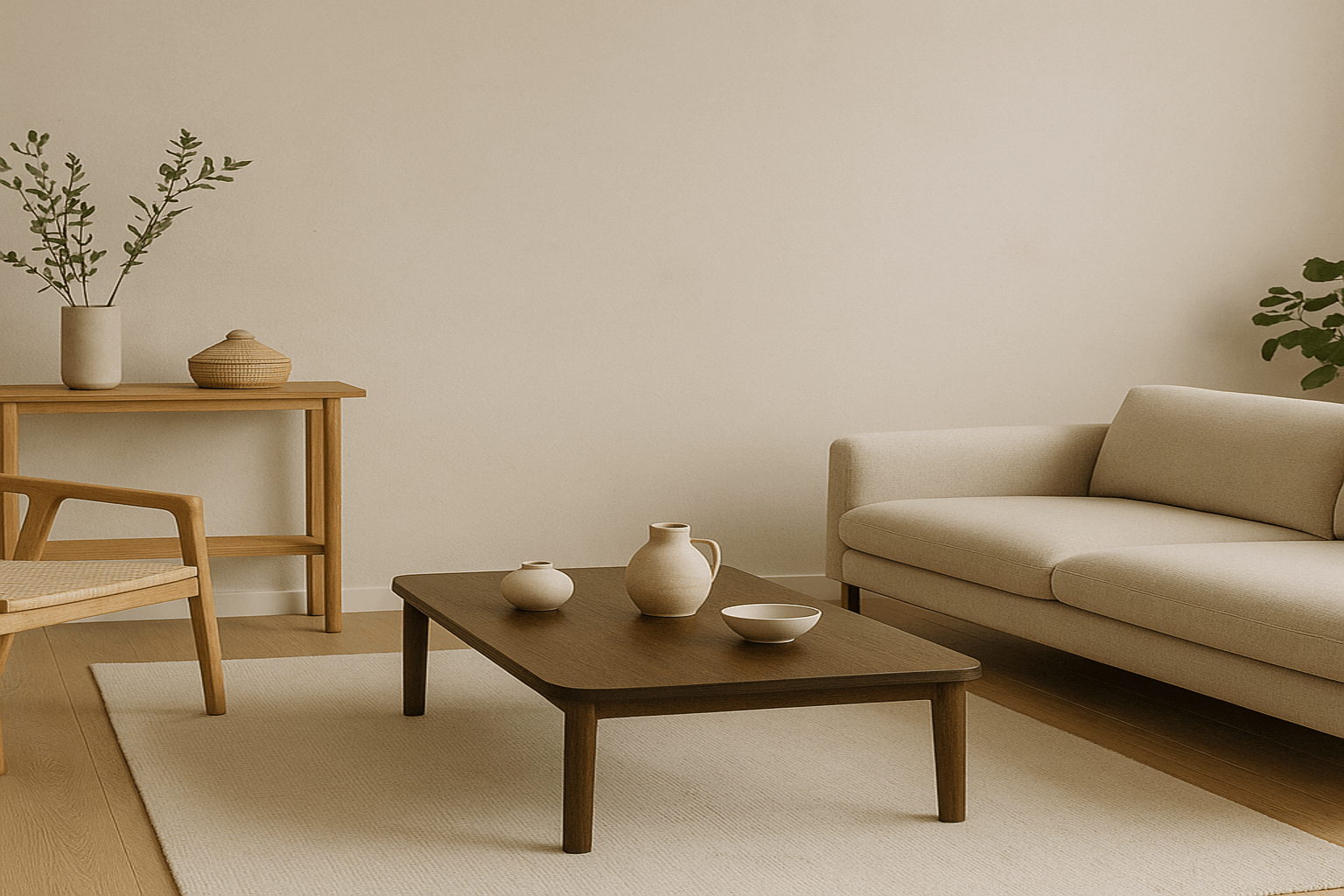Why Texture Matters in Minimal Interiors
Minimalist design is often misunderstood as being cold or sterile. But in reality, a well-designed minimalist space feels warm, inviting, and rich in subtle details. The secret lies in texture.
When you limit colors and decorative objects, texture becomes the main tool to create visual interest, depth, and coziness. It allows a space to feel dynamic and layered—without adding clutter or overwhelming the senses.
Types of Textures that Enhance Minimal Spaces
1. Natural Wood
Wood brings organic warmth into minimalist interiors. Whether it’s light oak, rich walnut, or raw reclaimed timber, the grain and tone of wood surfaces add an earthy, grounding effect.
2. Textiles & Soft Materials
Layering soft materials like linen, wool, cotton, and bouclé fabrics softens the hard lines typical of minimal design. Consider linen curtains, wool throws, or textured cushions to create a cozy atmosphere.
3. Stone & Ceramics
Stone surfaces—be it marble, travertine, or sandstone—introduce tactile contrast and timeless elegance. Handcrafted ceramics with subtle imperfections bring an artisanal feel to the space.
4. Matte & Brushed Finishes
Smooth, matte finishes and brushed metals offer a sophisticated touch while avoiding the harshness of glossy surfaces.
5. Natural Fibers & Rattan
Elements like jute rugs, woven baskets, and rattan chairs contribute to a warm, handcrafted aesthetic that feels both minimal and inviting.
How to Layer Textures in a Minimalist Home
-
Start with a Neutral Base
Use light, neutral colors on walls and large furniture pieces to create a calm foundation. -
Add Contrast Through Materials
Pair smooth surfaces (like plaster walls) with rougher textures (such as woven throws or stone tables). -
Use Light to Highlight Textures
Soft, diffused lighting enhances shadows and highlights, making textures pop subtly without visual clutter. -
Balance Soft & Hard Textures
Combine hard materials (wood, stone, metal) with soft textiles to create harmony and visual comfort.
Common Mistakes to Avoid
-
Overlooking Texture Variety: Relying solely on flat, smooth surfaces can make a space feel lifeless.
-
Mixing Incompatible Materials: Aim for cohesive materials that complement the minimal aesthetic.
-
Adding Too Many Patterns: Focus on tactile variation rather than busy patterns to maintain minimalism.
Practical Tips for Beginners
-
Introduce a textured area rug as a statement piece.
-
Swap synthetic fabrics for natural fibers like linen or wool.
-
Use handcrafted ceramics as functional decor.
-
Incorporate woven storage baskets to blend function with texture.
-
Consider raw-edge wood furniture for added character.
Final Thoughts
In minimalist interior design, texture is what gives life to simplicity. By thoughtfully layering natural materials and playing with tactile contrasts, you can create a home that feels serene yet rich in detail. Texture elevates minimalism from cold simplicity to warm sophistication.
















